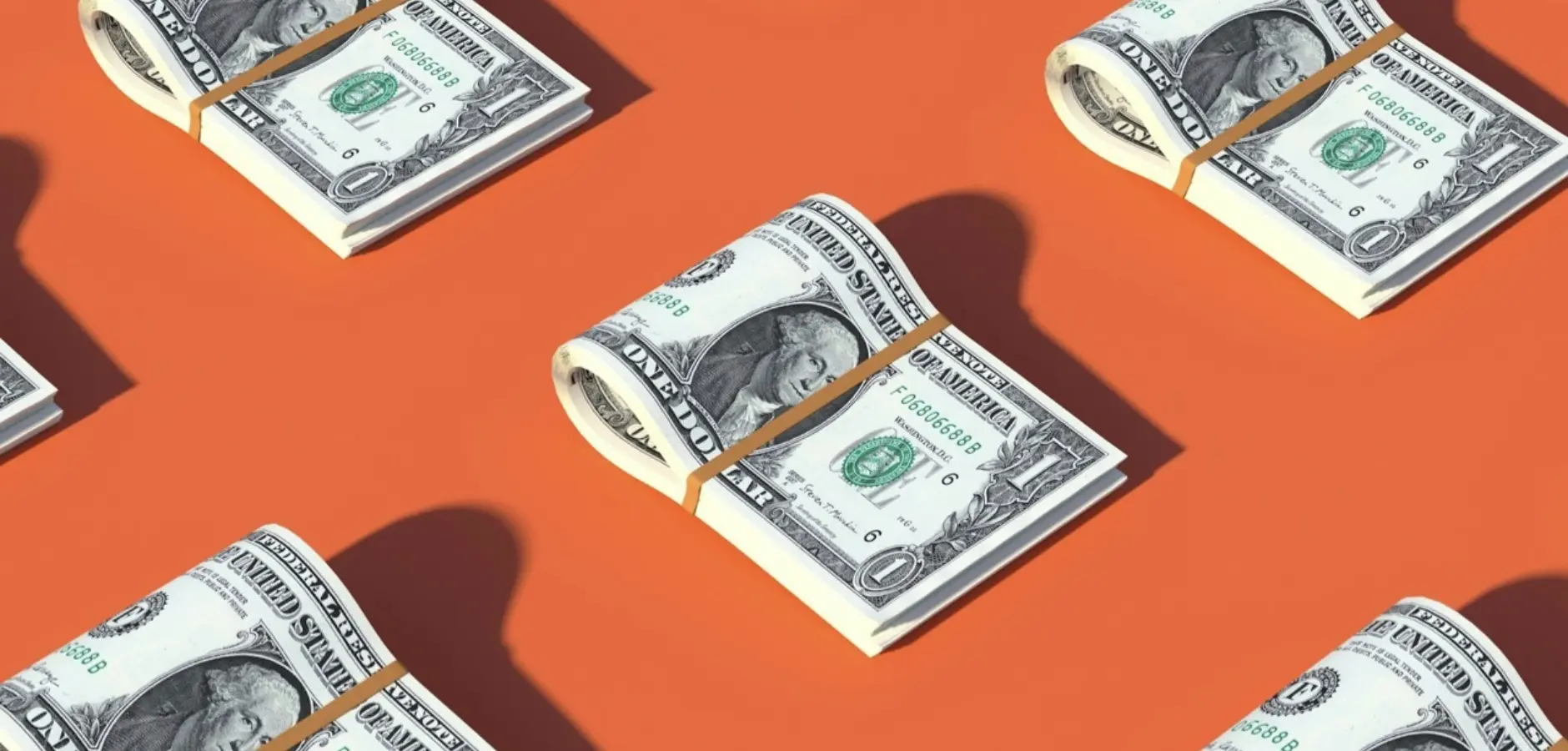In one of The Office’s most memorable episodes, Michael Scott’s Willy Wonka-inspired golden ticket promotion went hilariously wrong. His plan to randomly distribute five 10 percent discount tickets backfired when they all reached the same major client, forcing Dunder Mifflin to honor a 50 percent discount.
A strategic loyalty program requires fundamentals Michael overlooked:
- Clear terms and conditions limiting reward stacking
- Systematic tracking of reward distribution and redemption
- Personalized incentives based on customer value and behavior
Unlike Michael’s chaotic approach, which cost the company dearly, effective B2C loyalty strategies should map rewards to customer lifetime value, creating targeted incentives from first purchase through advocacy.
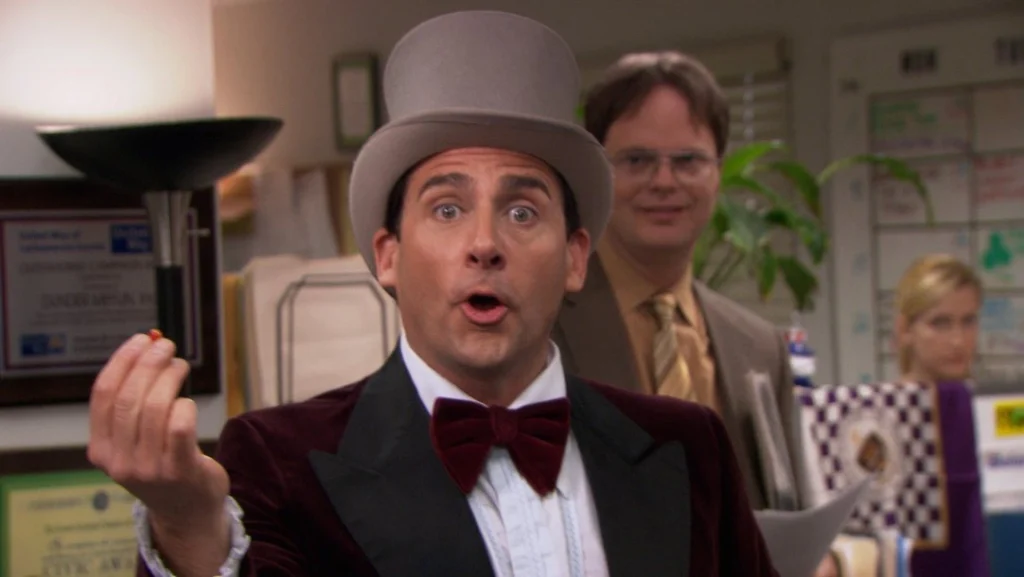
“You miss 100% of the shots you don’t take – Wayne Gretzky” – Michael Scott. But in loyalty programs, you also need to carefully aim those shots.
Why rewarding different customer behavior makes sense in B2C loyalty programs
To build long-lasting customer relationships, start by aligning your rewards with the customer lifecycle. The customer lifecycle model tracks a customer’s journey from discovering your brand to becoming a loyal advocate.
This approach means offering different incentives based on where customers are in their journey—from the first time they interact with your brand to becoming loyal fans who spread the word.
As a marketer, your goal is to guide customers through each stage—from acquisition to revenue and eventually referrals. By incentivizing specific actions at each phase, you’re giving them little nudges that make their experience with your brand worthwhile and personalized.
This approach keeps them moving naturally through the journey, making them more likely to stick around and eventually promote your brand.
Why is rewarding specific behaviors at different stages essential?
Different customer behaviors show where they are in their journey, so it makes sense to customize incentives to match stages.
Think about how customers change along the way:
- How familiar they are with your product
- How they perceive your brand’s value
- Their influence on others
- Their commitment to your brand
For instance, asking a brand-new customer for a referral might not work—they’re just getting to know your product and aren’t ready to be referrers yet. But, a long-term customer is likelier to leave a review or recommend your brand because they already trust you.
While reward purchases are common, adding targeted incentives throughout the customer lifecycle is a great way to grow engagement and loyalty.
You should follow the 5 core stages of the AARRR (acquisition, activation, revenue, retention, and referral) buying stages model. Each phase offers unique opportunities to incentivize customers and build stronger connections.
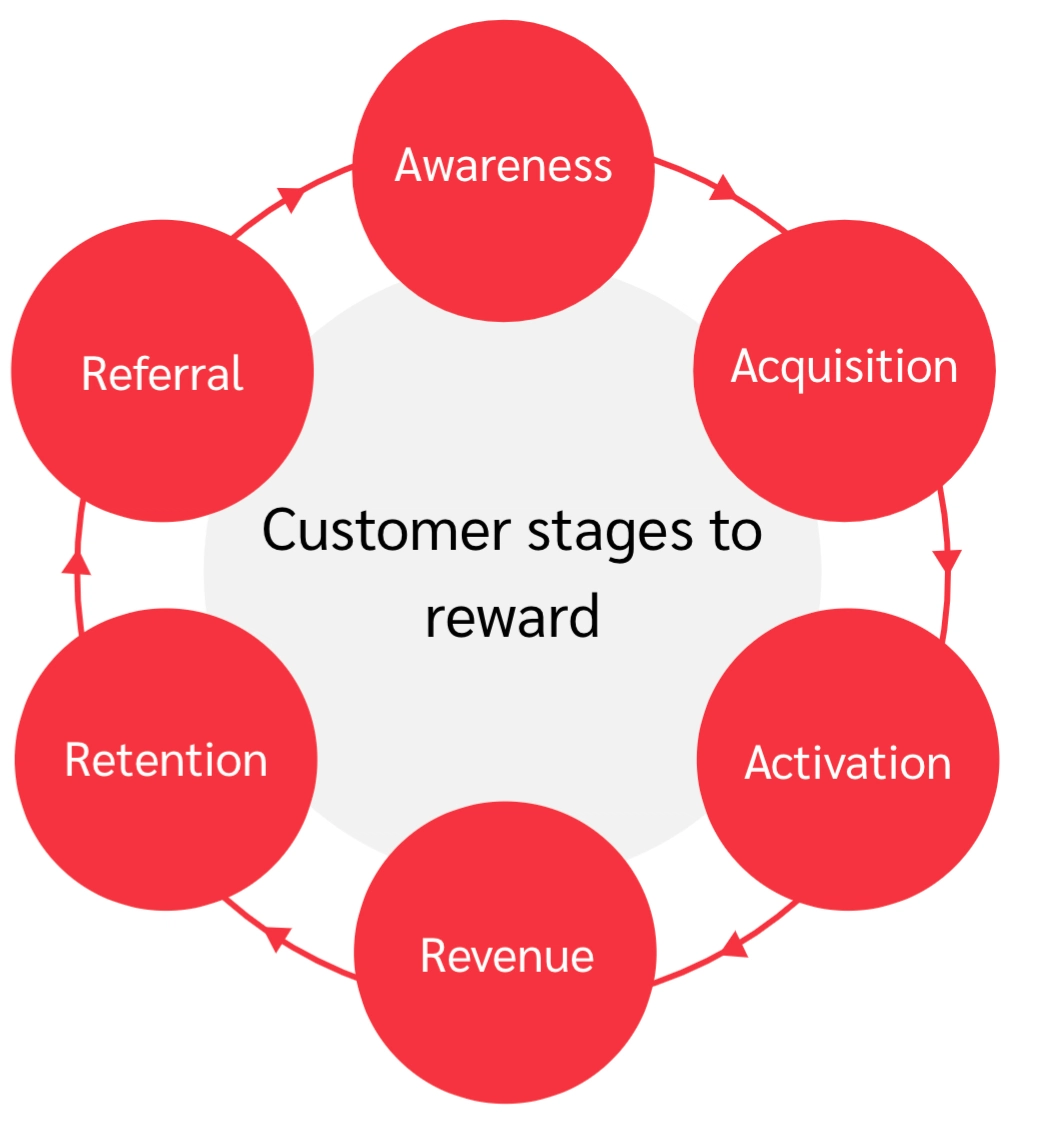
Give customized rewards for each stage of the customer journey
When it comes to loyalty programs, a one-size-fits-all approach won’t cut it. To maximize engagement, consider incentives as stepping stones that guide customers through their entire journey with your brand.
Each stage offers unique opportunities to reward behaviors that nurture lasting loyalty.
Acquisition stage
Acquisition is the first real interaction a user has with your brand—it doesn’t always equate to a purchase. In the digital space, this might look like someone signing up for a trial, downloading your app, or creating an account.
At this stage, you aim to build a fundamental relationship with potential customers and give them a reason to explore your brand further.
4 Behaviors to reward at the acquisition stage:
- Sign up for your newsletter: Offer a small incentive, like a discount code or store credit, in exchange for their contact info. A regular newsletter keeps your brand on their radar and encourages future engagement,
- Start a free trial: If you’re a B2C software or subscription brand, encourage users to create an account and begin exploring your product. Send email or mobile push notifications highlighting top features and moving them closer to complete activation.
- Download a piece of content: Share blog posts, video tutorials, case studies, or guides. Give prospects access to exclusive content in exchange for their email, helping build your list and offering them more value.
- Educate customers: Offer a how-to video on how to use your product, and give the user something for completing it. Include a subtle pitch on how your product helps solve related challenges.
Example: G-Star offers customers a 20 percent discount on their purchase when they provide their email address for product updates.
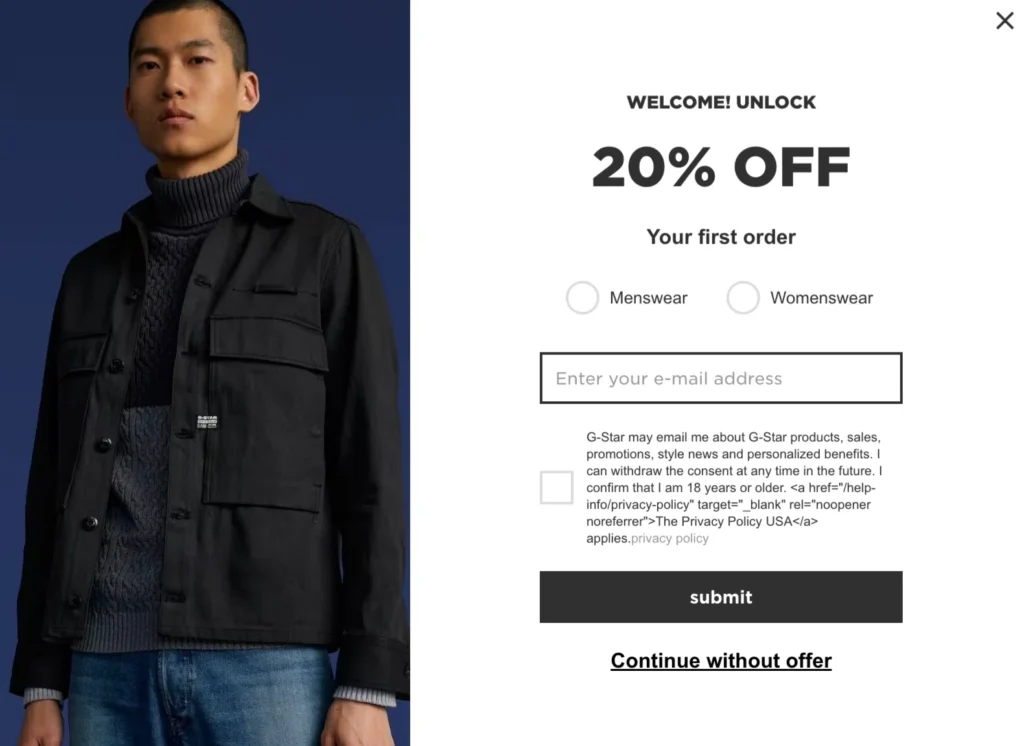
Intended result: Guide potential customers to take that next step toward becoming engaged users of your product or service.
Activation stage
The activation stage is where users start exploring your product more in-depth—think a free trial product, or app-sign-up.
Early product engagement is an opportunity for users to evaluate your offering before making a lasting commitment. Think of it as their trial period to determine if the value matches their needs.
The goal is to encourage them to dive in and discover your product’s value. Giving a little something that highlights your product’s benefits can push them toward paying or becoming regular users.
2 Behaviors to reward at the activation stage
- In-app or website action: Depending on your platform this might be creating a wishlist, downloading an app, booking an appointment, etc.
- Profile completion: Give users a reason to fill out their profile in the app or website. This allows you to personalize their experience and gives you valuable audience insights.
Example: IKEA offers multiple ways to earn points on the app besides making a purchase.
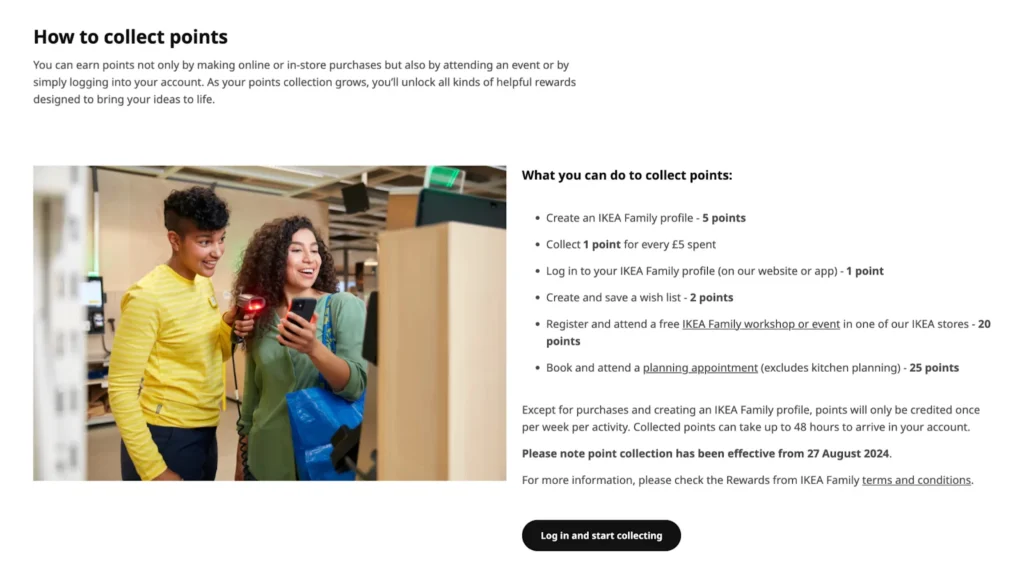
Intended result: Help users become involved customers who genuinely see the value in your product.
Revenue stage
In ecommerce and retail, 85 percent of loyalty programs encourage customers only when they make a purchase. However, by focusing solely on purchases, brands could miss big opportunities to engage customers throughout their journey.
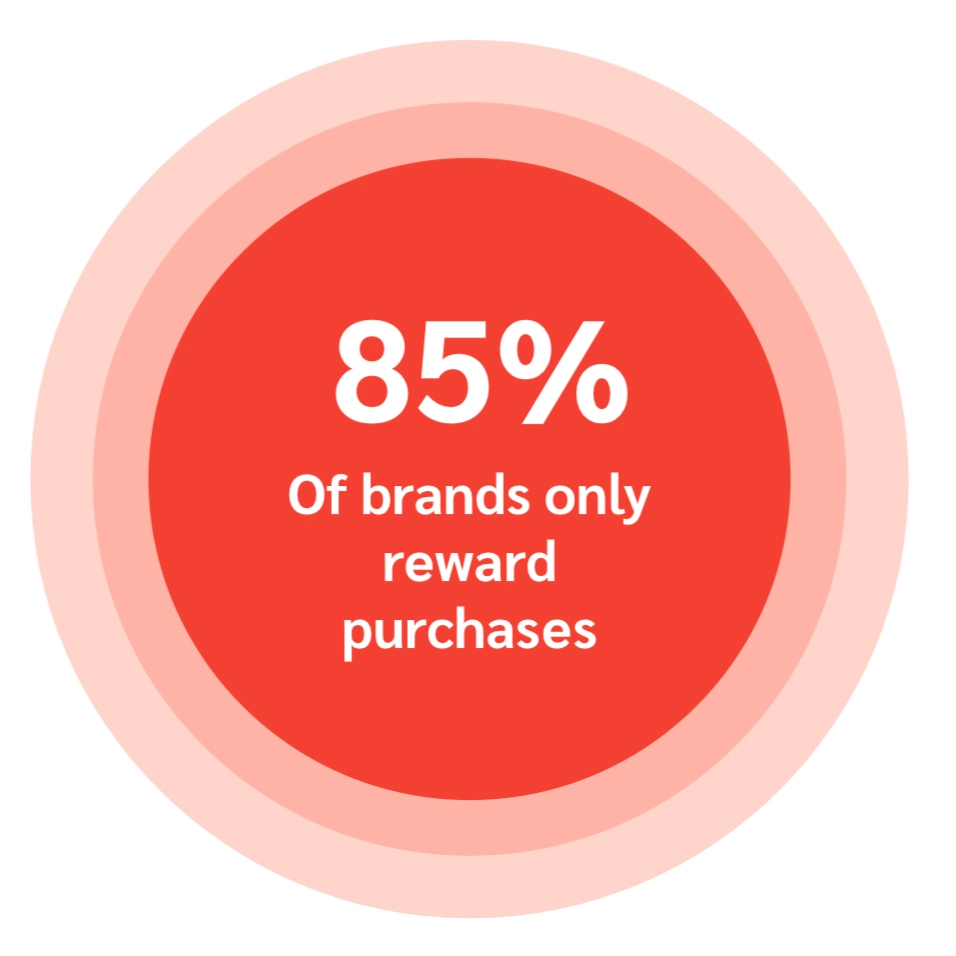
Source: impact.com’s The state of referral marketing report 2024
The revenue stage is where a user takes that first financial step—whether it’s placing an order or starting a subscription. At this point, they see enough value in your brand to commit.
Your goal is to turn interest into action. A well-timed discount, gift, or points can motivate them to seal the deal.
2 Key behaviors to reward at the revenue stage
- Place an order: The classic action to reward, often with a discount or loyalty points. It shows the customer is now invested in your business and officially part of your community.
- Increase rewards as purchases increase. Tiered incentives are a great way to encourage constant interaction with your product.
Example: Mcdonald’s uses a tiered reward system to entice customers with free food.
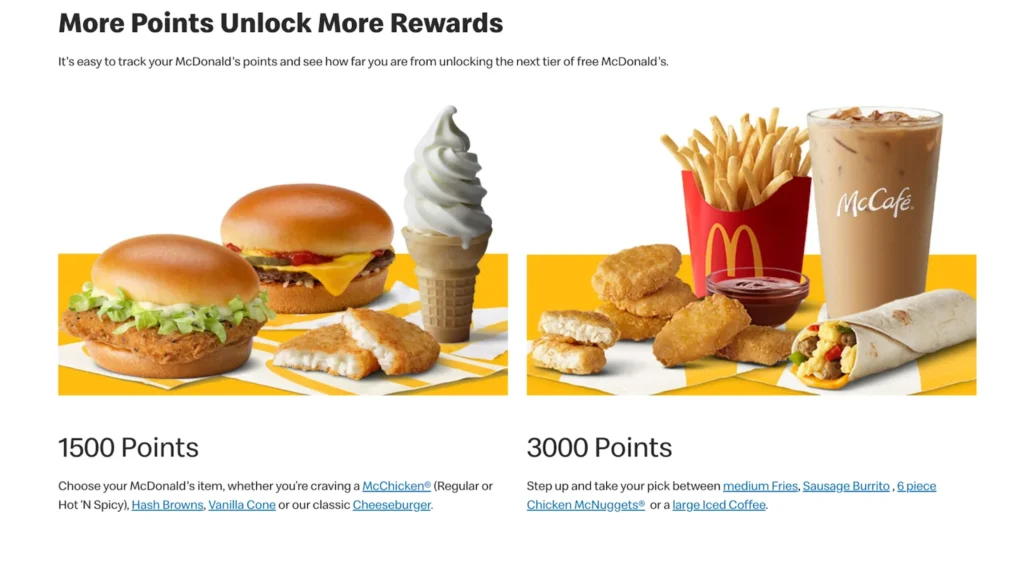
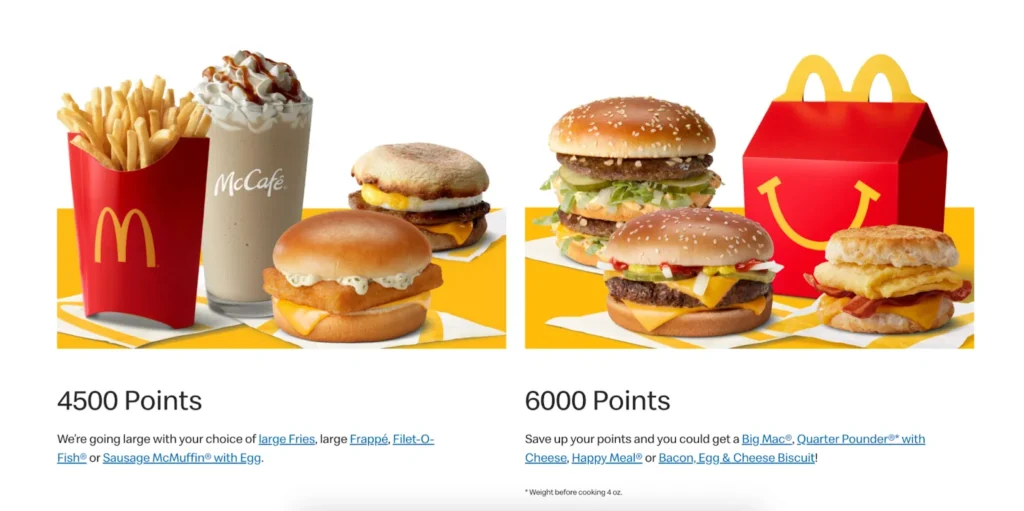
Intended result: Build a foundation for repeat purchases and long-term loyalty.
Retention stage
Once customers make their first purchase, the focus is on keeping them around. Retaining existing customers is easier (and cheaper) than bringing in new ones, so consistent rewards can make a big difference.
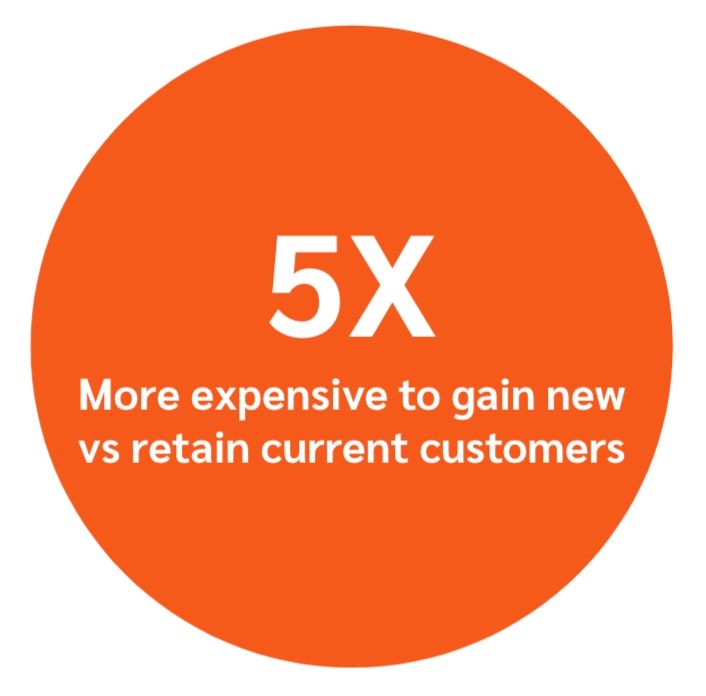
*Source: HubSpot’s Annual State of Customer Service Report
At this point, it’s all about staying top-of-mind and encouraging repeat habits that help turn customers into loyal brand fans. Even if they’ve gone quiet, re-engaging them can be much more effective than starting over with someone new.
3 Key behaviors to reward at the retention stage
- Reach a usage goal: Give a shout-out to users who hit specific milestones—like regular logins, frequent purchases, or other in-app activity. VIP offers for top customers can tap into their desire for status and exclusivity.
- Make a follow-up purchase: Some customers may need a little nudge to make that next purchase. A small incentive could be the push they need to return, helping them move toward brand advocacy.
- Attend an industry event: Reward customers who are into learning and networking. Whether it’s a product launch or an industry meet-up, these events can deepen their connection to your brand.
Example: H&M offers a 15 percent discount to draw customers back to the online and physical store.
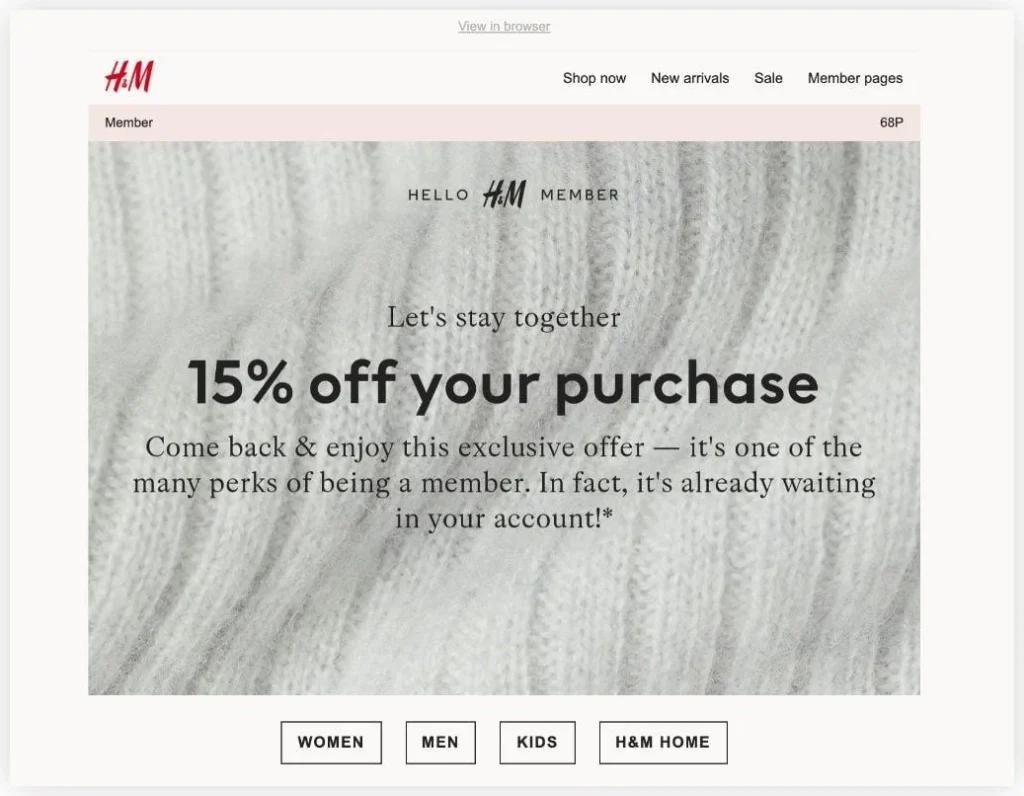
Intended result: Build lifelong loyalty and turn customers into enthusiastic advocates for your brand.
Referral stage
Engaging users at the referral stage is a great way to drive brand awareness. This is when loyal repeat customers become your biggest advocates. They spread the word and bring in new business through good old-fashioned word-of-mouth.
3 Key behaviors to reward at the referral stage
- Send a referral code or link to a friend: Use referral software to generate unique codes and links that customers can share. In a double-sided program, both the referrer and their friend get an incentive. It’s a win-win for both sides.
- Promote your brand on social media: Encourage users to share a post or mention your brand on their profiles. Sweeten the deal with a prize draw or contest to boost your visibility in their social circles.
- Leave a review: Give customers something special for leaving reviews on popular sites like Google, Capterra, or your social media pages. Positive reviews build credibility and help sway potential buyers.
Example: Surreal offers a referral discount for current and new customers.

Intended result: Boost customer lifetime value by building a community of loyal advocates who spread the word about your brand.
Use the right tech to efficiently setup a reward system for your B2C loyalty program
To effectively incentivize the right customer behaviors throughout their journey, you need a platform that allows you to configure, test, and refine incentives at every stage. With impact.com, you can setup discounts, gifts, and loyalty points based on your customer behavior. The platform automatically rewards users at the right moments by passing custom events from your system.
Taking a customizable approach means you have the latest insights into which strategies are most effective. It also provides a clear view of your customer lifecycle, helping pinpoint stages that need extra attention to build stronger, more loyal brand advocates.
With impact.com/advocate, you can access all the features needed to reward customers: built-in tools, automation, and reliable support.
Looking for a highly customizable and scalable referral marketing solution? Then contact impact.com/advocate today.
Want to learn more about how customer referral and loyalty strategies can grow your business? Check out these resources:
- How to win back lost customers: 7 marketing tactics that rebuild customer loyalty [blog]
- 5 successful ecommerce referral programs and why they work [blog]
- How to switch to a new referral platform in 6 easy steps [blog]
- Top 6 customer referral marketing trends your brand can leverage in 2024 [blog]
- 7 referral marketing strategies to grow your retail business [+stand-out brand examples] [blog]
- Turn delighted customers into revenue-driving advocates [ebook]
- More than a pop-up: Building a customer referral program that scales [+ the tech that drives it [blog]
FAQs
A B2C loyalty program is a strategy brands use to incentivize customers for specific actions, like purchases or referrals. It’s designed to boost engagement, encourage repeat purchases, and build long-term brand loyalty by offering perks, points, or discounts to customers who interact with the brand.
To create a successful B2C loyalty program, start by defining clear goals and understanding your customer journey. Use a flexible platform like impact.com/advocate to set up rewards for specific behaviors at each stage—such as purchases, referrals, or social shares. Continuously test and adjust the program based on performance data to keep customers engaged and drive long-term loyalty.
A good example is Starbucks Rewards, where customers earn points (or “Stars”) for every purchase, redeemable for free drinks, food, and exclusive perks. The program encourages repeat purchases and personalizes offers based on customer behavior, keeping users engaged and loyal to the brand.
